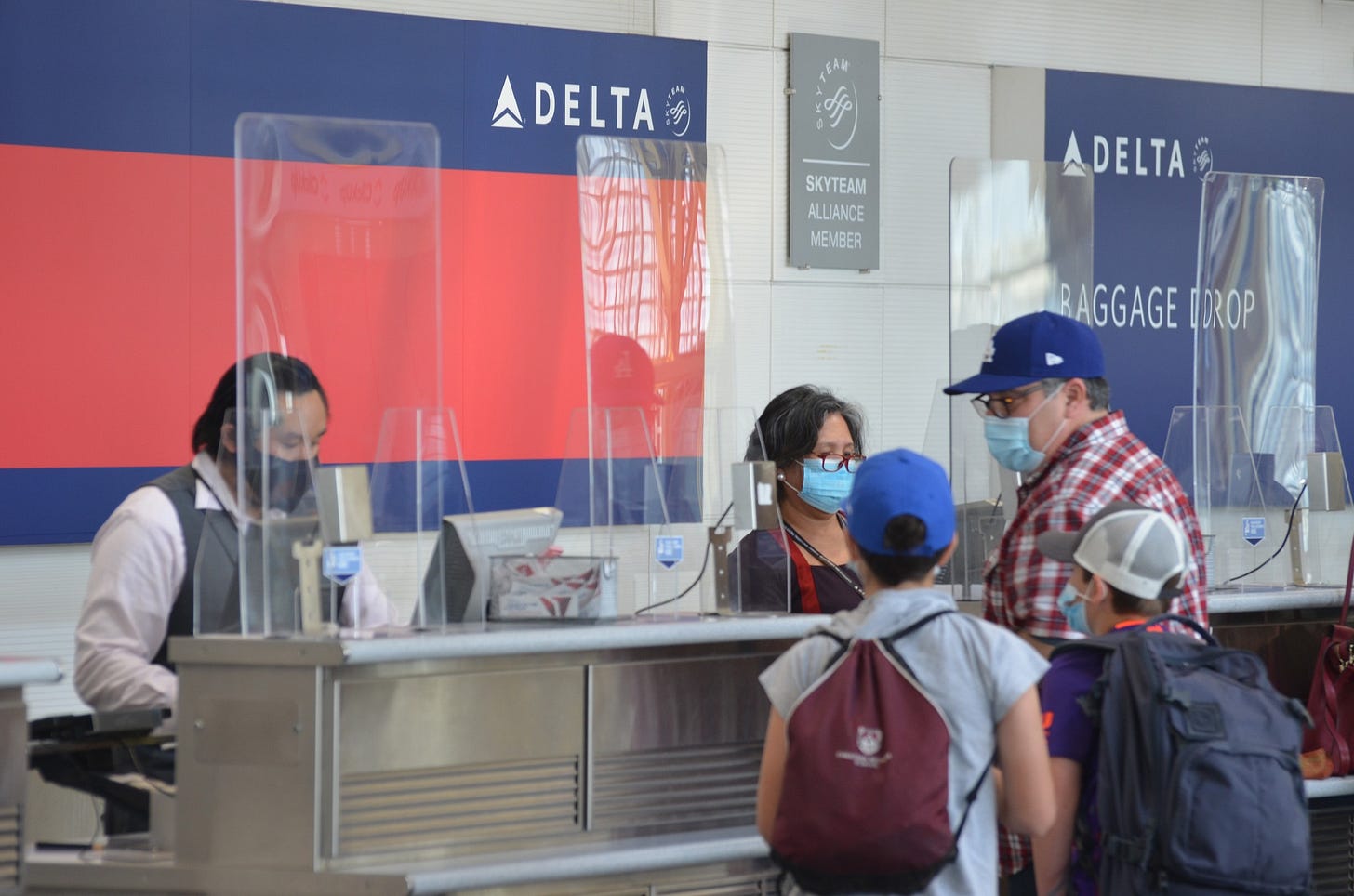Were holiday flying problems determined 20 months ago?
Not all airlines followed the same playbook

Full Throttle looks at the Transportation Transformation we are experiencing. It's free and will be sent to your email twice a week. Follow me on your favorite social platform: Twitter, Instagram, Facebook, or LinkedIn for updates during the week.
November 24, 2021
The stories of possible Thanksgiving travel headaches have been on the TV news for the past several days. Expect higher gasoline prices for those driving and potential meltdowns coming for airlines and airports. The seeds for these sprouting problems were planted at the beginning of the pandemic when demand for flights plummeted. This is the story of how some airlines, even with $50 billion in pandemic relief funds, struggled to restart broader service, leading to this holiday flying season 20 months later.
SUMMER MELTDOWN
Summer travel showed us the weaknesses in the system. Half of the big four carriers in the US suffered severe cancellations. Both American and Southwest Airlines blamed weather events for triggering the cancellation of thousands of flights over several days and then weeks. But experts say the underlying problem was a worker shortage at both airlines.

“Among the big four, United and Delta are better prepared,” for holiday travel says Harry Harteveldt of Atmosphere Research Group. The travel industry analyst says the airlines, “took very different approaches for how they prepared for the pandemic and how they came out.”
UNITED VICTORY LAP
The CEO of United Airlines, Scott Kirby, clearly made this point during his company’s third quarter earnings call. “It has been uniquely different at United Airlines.” Kirby told analysts that United realized when the pandemic started it would be long, making the “realistic estimate it would last to the end of 2021.”
One of the keys for United, Kirby says, is that it was, “the only airline to negotiate with pilots,” so it could bring the airline back without a pilot shortage. When demand started to return, Kirbys says the airline didn’t rush to dramatically increase the number of flights. “We metered in the growth,” Kirby said, adding, “we’ve just managed it completely different than other airlines.” Delta Airlines may disagree with that last statement. Its return to service has looked a lot like United’s.
United CEO Scott Kirby explaining how he believes the airline was more prepared for return to service. (Credit: United)
One other difference for United is its vaccine mandate. Unlike the other three big airlines, United demanded that all of its employees be vaccinated. “This is in the rearview mirror for United. It’s going to be a huge challenge for those airlines that are not implementing vaccine requirements,” Kirby said.
THANKSGIVING PREPAREDNESS
Southwest Airlines says it has made changes to be prepared for holiday travel. The Dallas-based airline says it has hired 4,500 workers across its operations. It announced and implemented changes to its schedule, which it says leaves it, “ready to welcome customers on board this holiday season.” Harteveldt says Southwest “appears well-prepared,” for Thanksgiving travel.

American Airlines is in the middle of negotiations with its pilots’ union. Those negotiations, “appear to be tense,” according to Harteveldt. The analyst says American Airlines, “has not done a good job scheduling, which has nothing to do with the pandemic.” The airline pulled thousands of flights out of its schedule through mid-December.
As with any winter travel season it could be the weather that determines if passengers get home for the holidays. Harteveldt says he hopes that weather is not an issue, but he, “won’t be surprised if we are talking about one of the airlines having trouble.”




